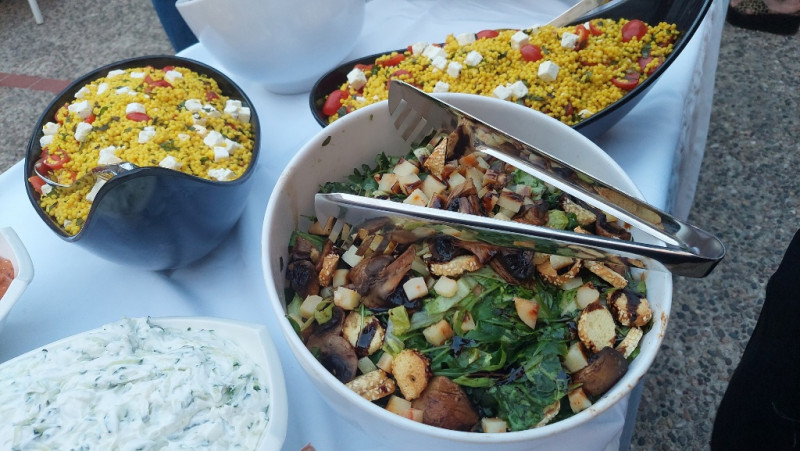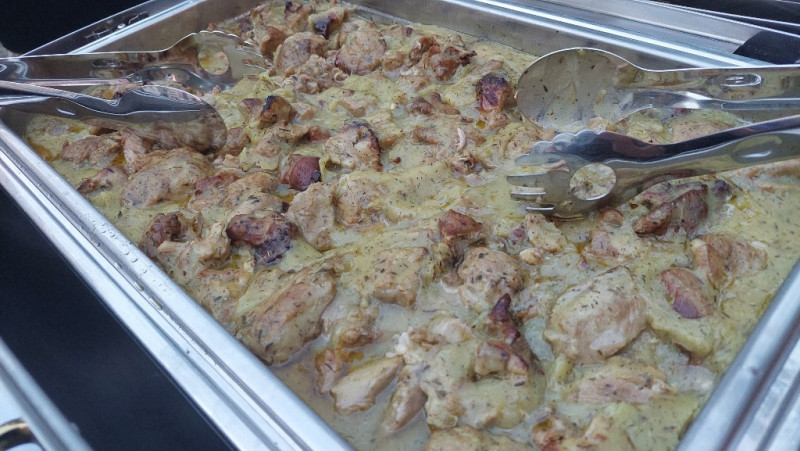In Greece today there are five million goats, which ranks our country in the first place among the countries of the European Union in terms of the population of the species, with a percentage of 32%.
An effort for her certificationfor the first time in Greece, the milk produced by Greek goat breeds is underway, with the aim of producing correspondingly certified products from this milk.
In Greece today there are five million goats, which ranks our country in the first place among the countries of the European Union in terms of the population of the species, with a percentage of 32%. This was one of the reasons for the initiation of the cooperation of the Institute of Veterinary Research of Thessaloniki at ELGO Dimitra with the Animal Science Laboratory of the Aristotle University of Thessaloniki and with private companies in the area, within the framework of the Graega Cheese project, with the aim of reading the genome of six Greek breeds goats and the certification of milk from its production to the production of quality cheese products from it.
Blood and milk samples have already been collected from around 19 farms on 327 animals and the samples will then be analyzed. Samples have been taken from the domestic goat, the black goat of Halkidiki as well as the goats of Skopelos, Pangai, Serres Aridaia and also from the foreign species Anglonubia, Murtia and Damascus, so that the identification and differentiation of the samples can be done.
The above mentioned by Ioannis Sakaridis, veterinarian, researcher at the Veterinary Research Institute of Thessaloniki at ELGO Dimitra – scientific manager of the Graega Cheese project, speaking at a tasting event held in the courtyard of the Folklore and Ethnological Museum of Macedonia – Thrace, in collaboration with the Thessaloniki Tourism Organization.
“We want to find in a molecular way, using DNA techniques, a way to separate the milk coming from foreign goat breeds in relation to the Greek goat breeds. Essentially we will read the DNA of the main six breeds of goats that we have in Greece, the full genome will be sequenced, so we will find which parts of the genome are related between the Greek breeds and how they are separated in relation to the foreign breeds of goats that exist in GREECE”, he said characteristically. Thus, as he pointed out, a traceability standard will emerge, through which the breeding of Greek goat breeds will receive the relevant certification, which will follow the milk throughout the production line of any product. “This has never happened before in Greece.” he added.
In addition, the Graega Cheese project, named after GR, meaning Greece, and aega, meaning ‘goat’, will develop a chemical method to detect milk adulteration. In this way, exogenous sugars or proteins added to milk and water will be detected to detect any adulteration. “This standard will be used by the producers, the cheese factories, first the companies “Stamatis Proikas SA” and Georgios Kyriakidis “KERASSA”, within the framework of the program and then it will be opened to all cheese factories that want to produce cheeses certified from Greek goat breeds “, commented Mr. Sakaridis.
Tasting of “Macedonian Gourmet” recipes
The tasting event also presented recipes that have been developed in the context of the “Macedonian Gourmet” project, which aims to select seven recipes, representative of Macedonian cuisine, to be established in the catering industry and prepared in a specific way from local products coming from specific areas of Central Macedonia.
So far, the tastings, which started a long time ago and will continue, are preceded by traditional Macedonian recipes with eggplant, such as moussaka, shoes and imam, but also with pork, such as pork with cabbage or celeriac. As the chef and professor of gastronomy Giorgos Palisidis, who is responsible for the preparation of the menus, pointed out to APE-MBE, the dishes that are currently ahead of the tests and seem to be winning the judges’ impressions are -in order- the stuffed peppers with cheese feta cheese, moussaka, braised eggplant, shoe eggplant, imam, pork with celeriac, pork with lemonade, pork with cabbage, chicken with oatmeal and chicken stew.
The dominant eggplant and how pork recipes prevailed
Of the ten recipes above, eggplant is used in four, which is indicative of its strong presence in traditional Macedonian food. THE Loukia Aikaterinadou, researcher at the Veterinary Research Instituteof the Greek Agricultural Organization “Dimitra” which participates in the project, confirms this lead and, speaking to APE-MPE, gave as an example a humble, old recipe that “originates” from the Serres region and dates back to before 1900.
“I myself remember the recipe from my grandmother. These are dry-roasted, so-called, eggplants that are baked in the oven, then garlic is added, with or without tomato and walnuts, and baked again. It is a very tasty dish, not of the urban but of the popular Macedonian cuisine with very old roots, from the Turkish occupation”, notes features. He also states that the dry roasts really got the audience excited, while he clarifies that this is a meze and not a main course as it is quite heavy.
Regarding the recipes with pork, Mr. Palisidis pointed out that they prevailed and emerged in Macedonian cuisine during the Ottoman Empire, because “lambs and calves were taken as taxes, so pork was left in the world”. At the same time, cabbage, leeks and celery were in abundance during the winter and so prevailed to accompany the pork, in cooking recipes that stood the test of time and were much loved in the Greek area.
Tastings continue
Tastings within the “Macedonian Gourmet” project continue to select the seven most representative recipes of Macedonian cuisine. At the same time, there has already been interest from the market, specifically from a company active in the field of mass catering, in order to produce the specific dishes with the specific recipes that will be selected and channel them either to hotels or to large restaurants, either in supermarkets all over Greece but also abroad.
Speaking at the event, Deputy Governor of Thessaloniki Voula Patoulidou he emphasized that, through the programs “Graega Cheese” and “Macedonian Gourmet”, the best possible use is made of elements such as the agricultural land of Central Macedonia which has great productive value and potential and can create a treasure at a time when food is requested.
From his side, the deputy regional governor for Development and Environment, Kostas Yutikas he pointed out that the Region of Central Macedonia finances the programs that innovate and in which young entrepreneurs with appetite and extroversion participate and ELGO Dimitra, which can help in the research and certification of agricultural products.
RES-EMP
View the news feed and get the latest news.
I have worked in the news industry for over 10 years. I have a vast amount of experience in covering health news. I am also an author at News Bulletin 247. I am highly experienced and knowledgeable in this field. I am a hard worker and always deliver quality work. I am a reliable source of information and always provide accurate information.












